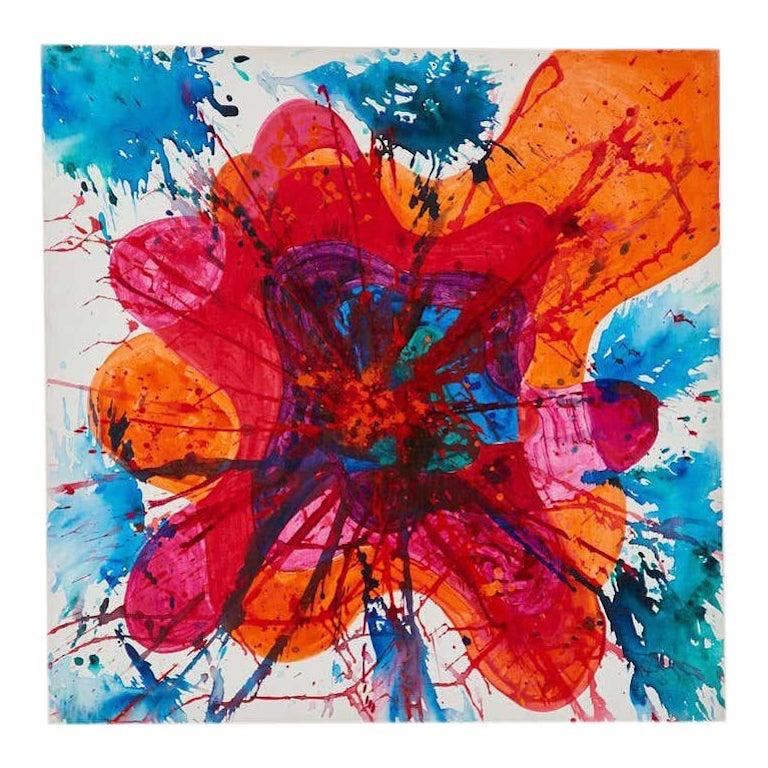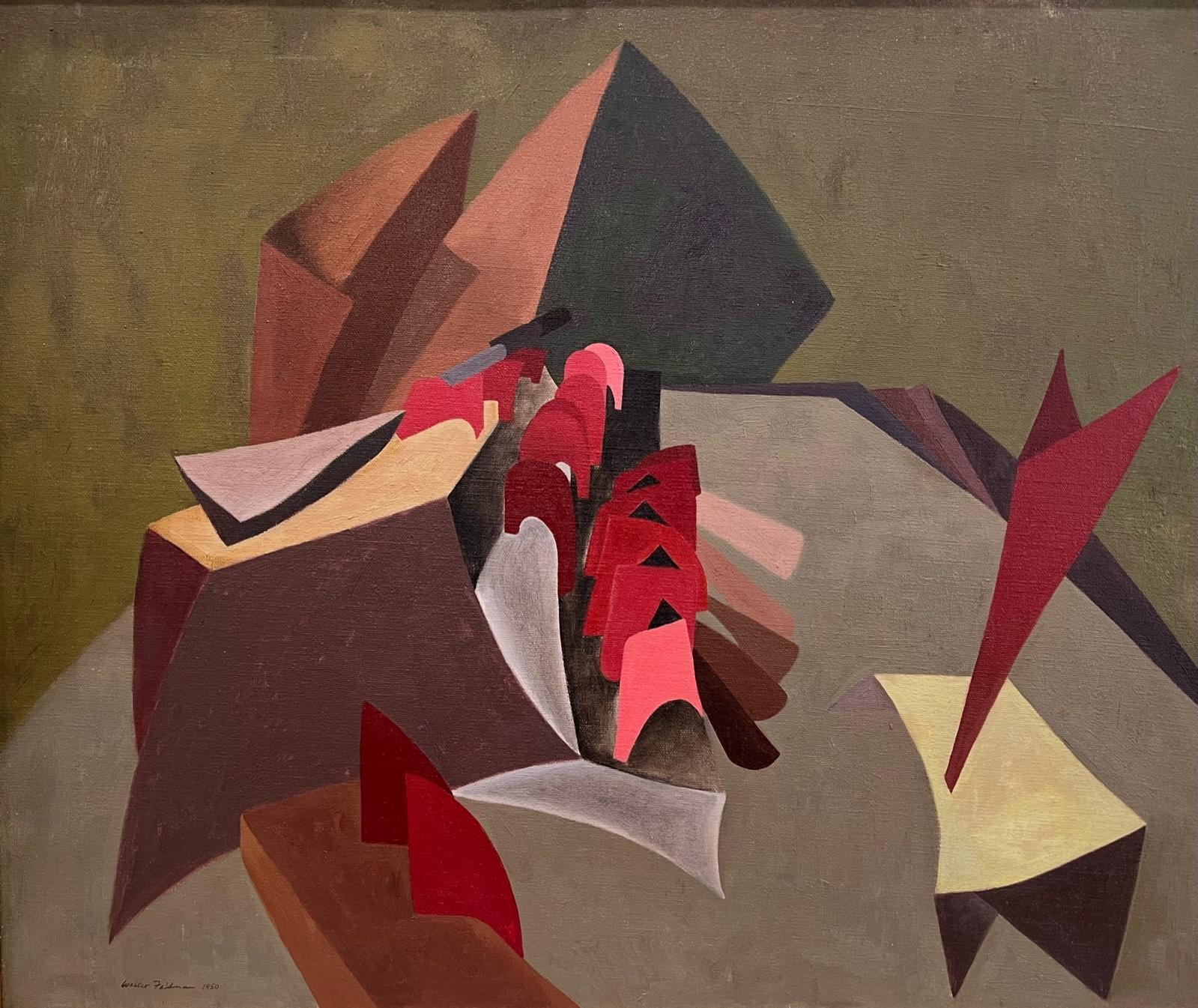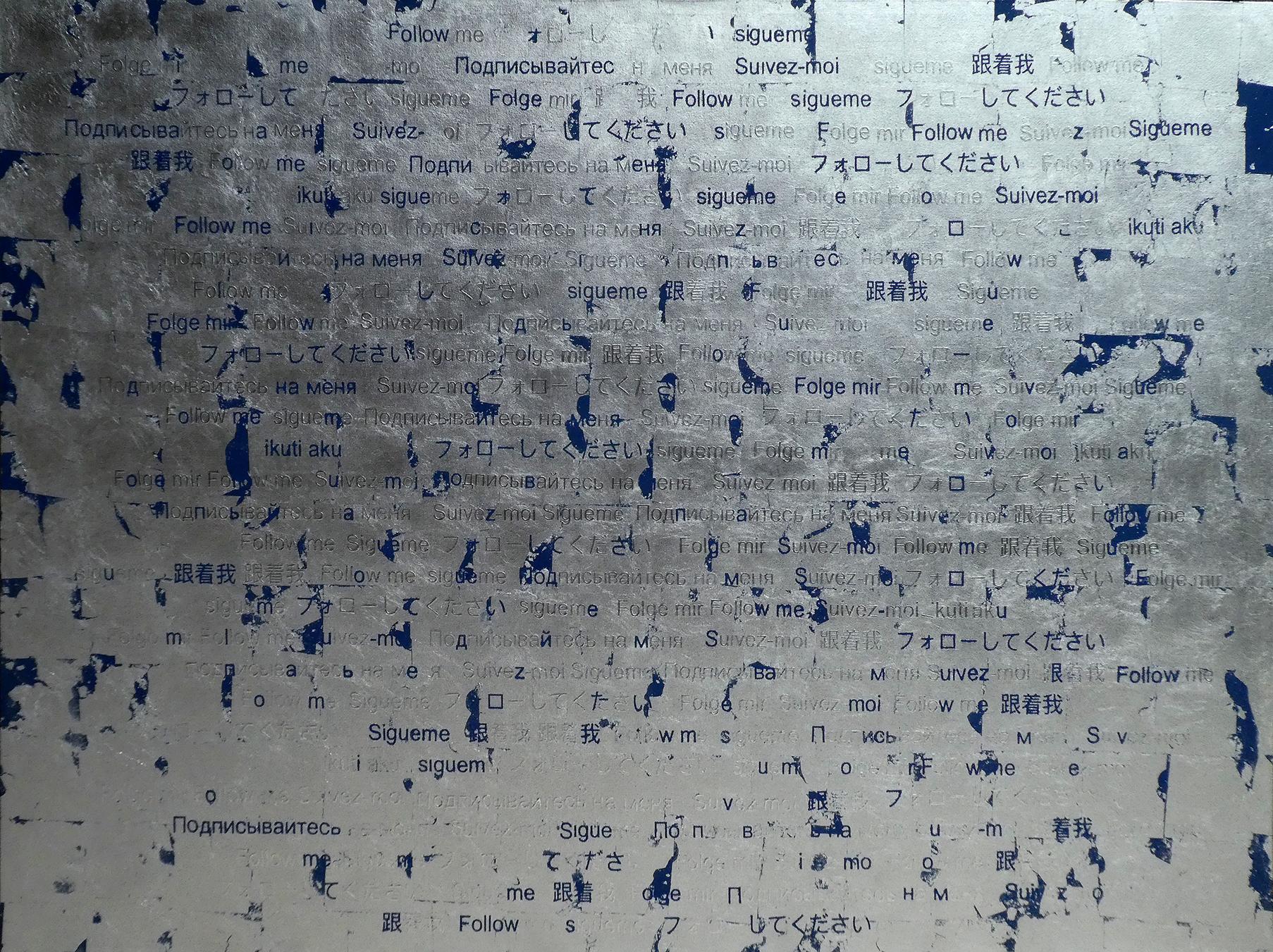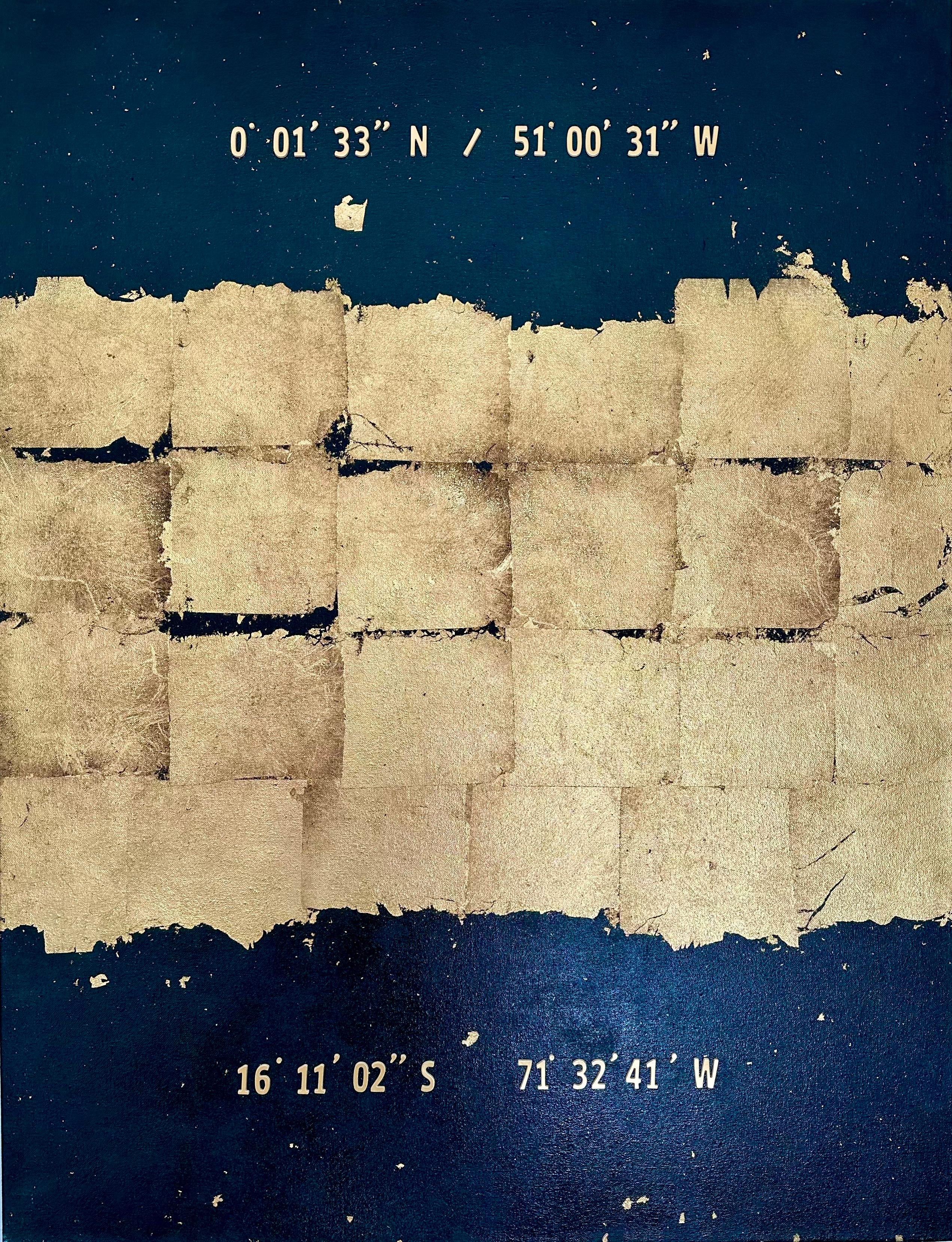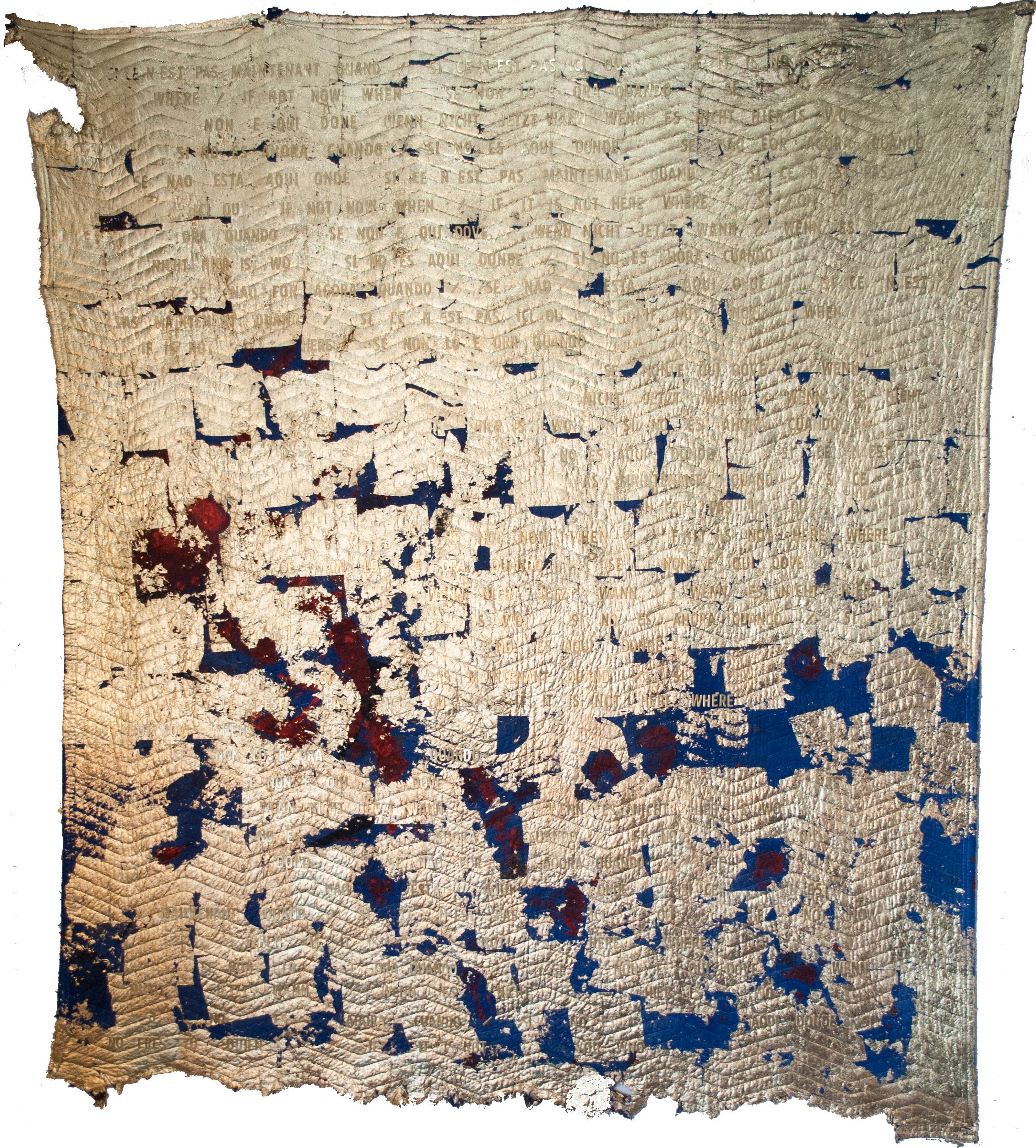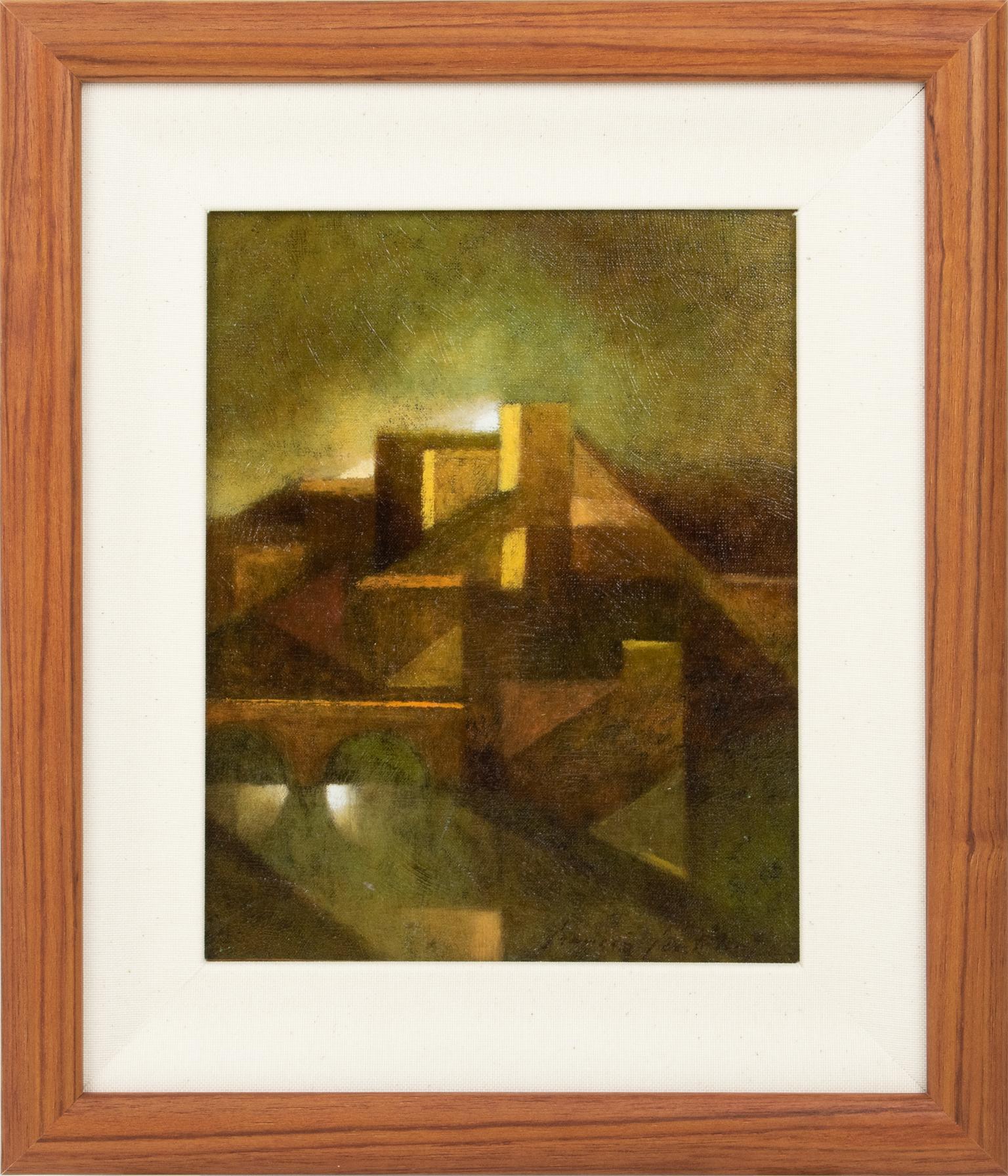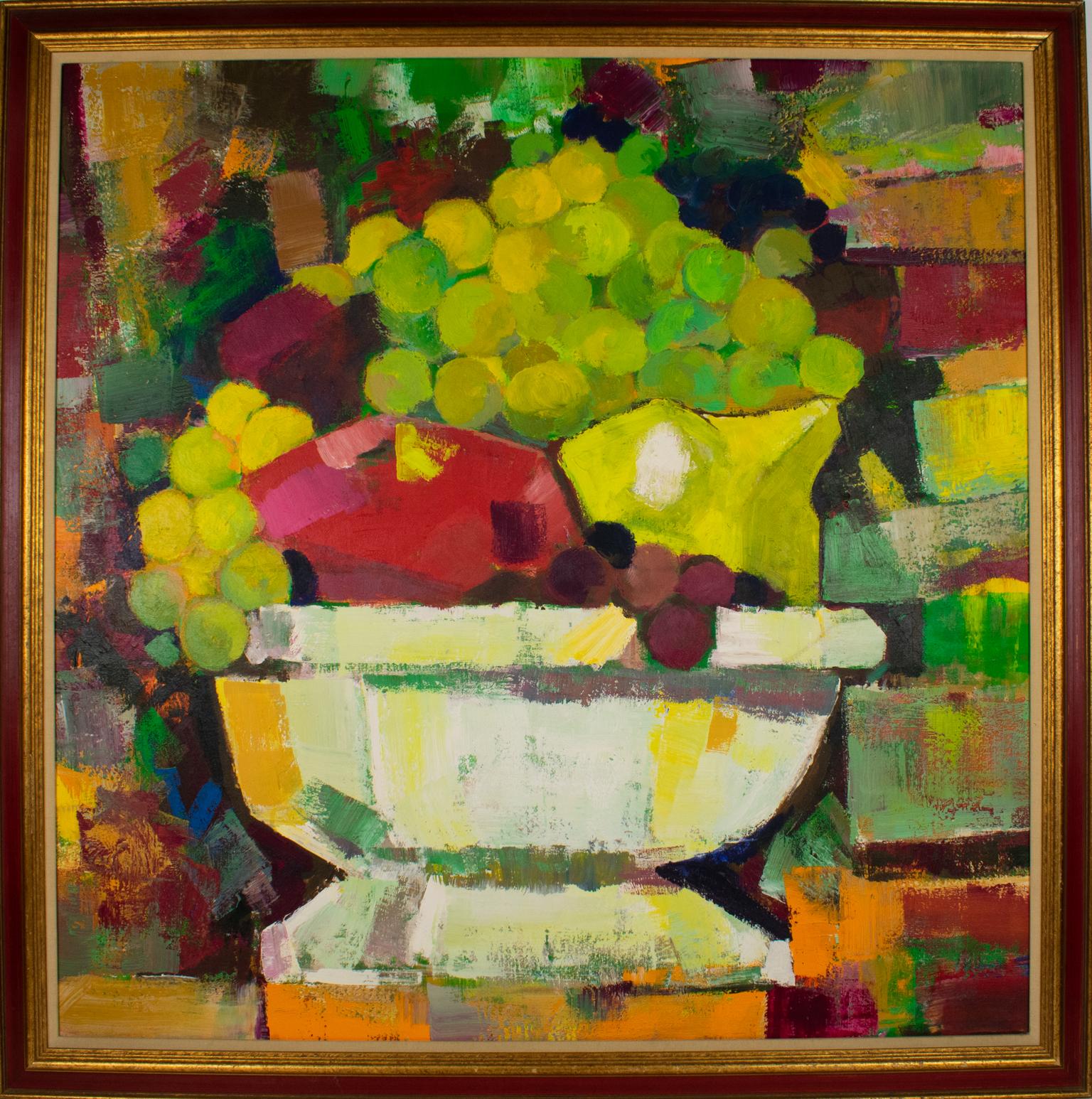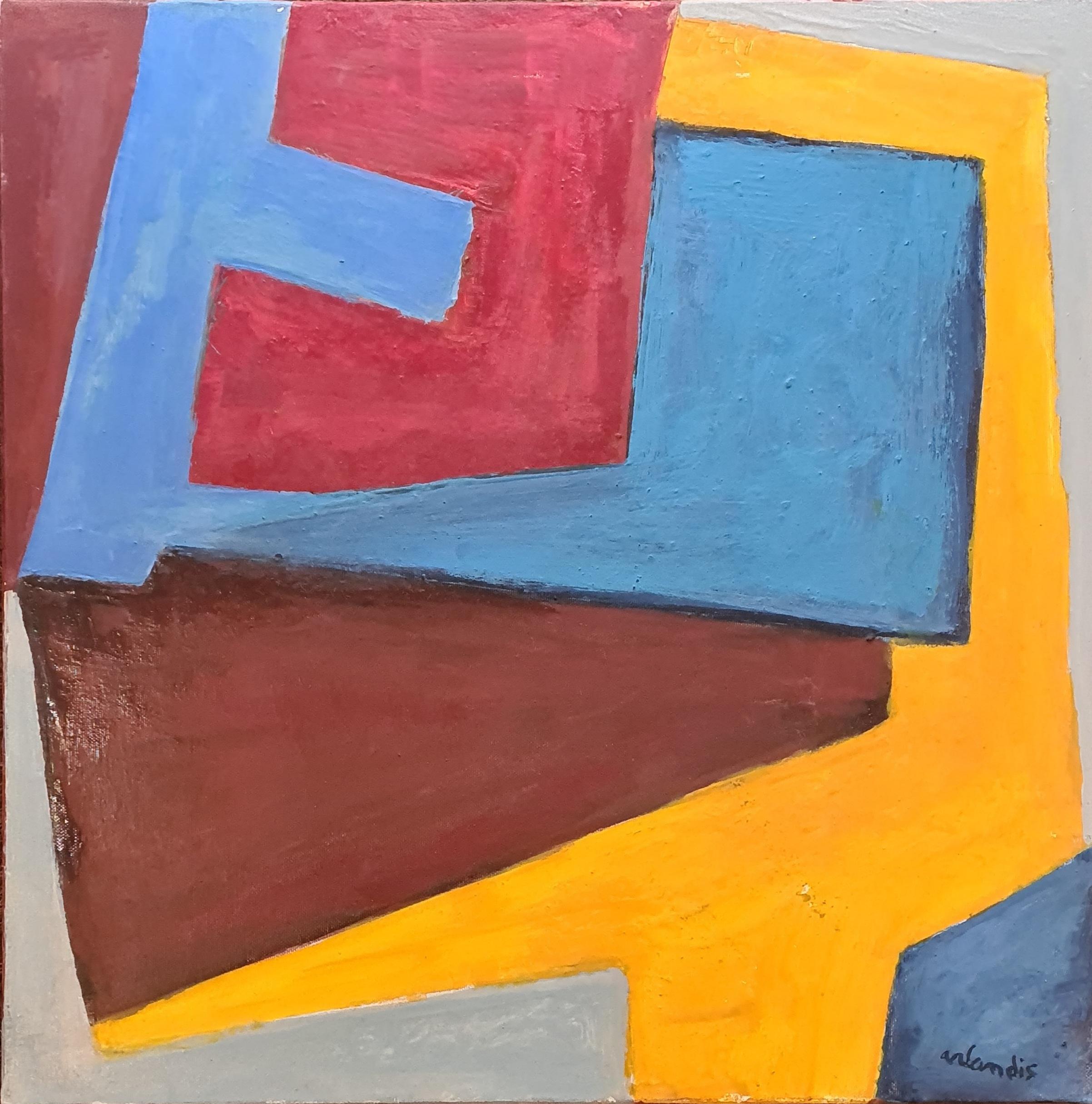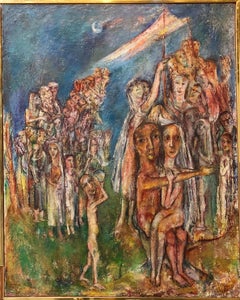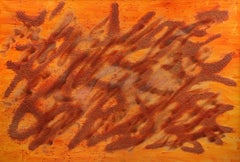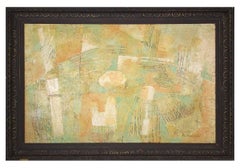
Vogue, Abstract Mid Century Modern Textured Oil Painting
View Similar Items
Want more images or videos?
Request additional images or videos from the seller
1 of 5
Rita GombinskiVogue, Abstract Mid Century Modern Textured Oil PaintingMid 20th Century
Mid 20th Century
About the Item
- Creator:Rita Gombinski (1919 - 2015, American)
- Creation Year:Mid 20th Century
- Dimensions:Height: 24.5 in (62.23 cm)Width: 36 in (91.44 cm)
- Medium:
- Movement & Style:
- Period:
- Condition:Measurements include frame.
- Gallery Location:Surfside, FL
- Reference Number:Seller: 24451stDibs: LU3822279391
About the Seller
4.9
Platinum Seller
These expertly vetted sellers are 1stDibs' most experienced sellers and are rated highest by our customers.
Established in 1995
1stDibs seller since 2014
1,546 sales on 1stDibs
Typical response time: 1 hour
More From This SellerView All
- Israeli Modernist Abstract Expressionist Seascape Oil Painting Tel Aviv HarborBy Motke BlumLocated in Surfside, FLIn this artwork the artist uses the medium spontaneously .The paint has been applied thickly to the surface. The resulting work emphasizes the physical act of painting itself as an essential aspect of the finished work or concern of the artist. size is with frame. Motke Blum was born in Racacun, Romania in 1925. Early in his childhood, the Blum family moved to Bukarest where they settled in a house situated near a circus. The circus would become young Blum's greatest love. He befriended several of the clowns and other performers and, when not painting or playing in clay, Blum could be found enjoyoing the company of these spirited entertainers. These experiences would later become a recurring theme in many of his works of art. In 1938, he was taken by the Romanian Iron Guard. When the Germans invaded Romania, Blum was taken to a forced labor camp. Even during his imprisonment, he continued to create art, painting on the walls of the camp. He escaped the camp in 1944 and boarded an immigrants' ship to Israel. One of the three ships in the convoy was sunk by a German torpedo. Motke later incorporated shipwrecks, boats, and other maritime subjects into several of his paintings. Over the course of his long and fruitful career, Blum showed internationally at over fifty one-man-shows with exhibits in Israel, Holland, England, Belgium, the United States, France, Australia, and more. His art has been commissioned for public buildings and by prominant figures in Israel and around the world, and a series of posters were commissioned by the Justice Ministry and the Ministry of Tourism. Giving back to the community has been a focus throughout his life. After establishing a studio at Chutzot Hayotzer, Motke welcomed schools and both adults and children with special needs, using painting...Category
Mid-20th Century Modern Abstract Paintings
MaterialsCanvas, Oil
- Abstract Procession Jewish Wedding Chuppah Oil Painting Modernist JudaicaBy Sabina TeichmanLocated in Surfside, FLGenre: Modern Subject: Abstract Medium: Oil Surface: Canvas Country: United States Sabina Teichman: (1905-1983) Studied at Columbia Univ. (BA, MA), also with Charles J. Martin and A...Category
1950s American Modern Figurative Paintings
MaterialsCanvas, Oil
- Modernist Abstract Oil PaintingBy Hea Sook YooLocated in Surfside, FLHea-Sook Yoo, artist, internationally renowned, has her paintings hanging in residences, businesses and art galleries on three continents over three decades.Ms. Yoo is classically tr...Category
20th Century Modern Abstract Paintings
MaterialsCanvas, Oil
- Israeli Surrealist Judaica Abstract Oil Painting Naftali Bezem Bezalel SchoolBy Naftali BezemLocated in Surfside, FLShabbat Evening Large Israeli masterpiece painting. Hand signed lower right Provenance: Sara Kishon Gallery Naftali Bezem (Hebrew: נפתלי בזם; born November 27, 1924) is an Israeli painter, muralist, and sculptor. Bezem was born in Essen, Germany, in 1924. His early adolescence was spent under German Nazi oppression, in constant fear for the safety of his parents, who perished in the Holocaust in the Polish Auschwitz concentration camp. Naftali emigrated to Mandate Palestine in 1939, at the age of fourteen with a Youth Aliyah group. From 1943 to 1946, he studied art at the Bezalel Academy of Art and Design in Jerusalem with Israeli painter Mordecai Ardon. He then spent three years studying in Paris. His most famous public works include a mural wall relief sculpture at Yad Vashem, the Israeli Holocaust museum and commemoration in Jerusalem and the ceiling painting mural in the main reception room at the President's Residence, Jerusalem, Israel. He is also known for his stained glass windows and Aubusson style flat weave tapestry in many public and private places around the world. In 1957, Bezem was a co-recipient of the Dizengoff Prize for Painting. Exhibitions: General Exhibition, Art in Israel 1960 Tel Aviv Museum of Art Artists: Naftali Bezem, Nachum Gutman, Shraga Weil, Shraga, Marcel Janco, Ruth Schloss Yad Labanim Museum, Petach Tikva with David Azuz, Nachum Gutman, Moshe Gat, Shraga Weil, Lea Nikel, Ruth Schloss, Yosl Bergner, Anna Ticho, and Menashe Kadishman. Old and New in the Museum Collection, Yad Labanim Museum, Petach-Tikva Jacob El Hanani, Naftali Bezem, Yosl Bergner, Yossef Zaritsky, Yohanan Simon, Reuven Rubin, David Rakia...Category
20th Century Modern Abstract Paintings
MaterialsCanvas, Oil
- Israeli Modernist Abstract Expressionist Jerusalem Kotel Oil Painting JudaicaBy Efraim ModzelevichLocated in Surfside, FLEfraim Modzelevich (1931-1995) Work is abstract in subject, and expressive in terms of technique. The artist uses a muted color palette, and thick layers of paint to build up his co...Category
Mid-20th Century Modern Abstract Paintings
MaterialsCanvas, Oil
- Polish French Ecole de Paris Mid Century Modernist Oil Painting Clown JugglerBy Abram KrolLocated in Surfside, FLAbram Abraham Krol was born January 22, 1919, in Pabianice (Lodz), Poland. Abram Krol went to France in 1938 to study civil engineering at the University of Caen. In 1939 at the beginning of World War II he joined the Foreign Legion. After he was demobilized, he became a mechanic in a garage in Avignon. Although Jewish, he survived the war with a false identity. In 1943, Krol started studying to be an artist, taking courses in sculpture at the city’s School of Fine Art. He also began studying painting and self-described himself as a “Sunday painter.” Krol moved to Paris in 1944. The first exhibition of his work was in 1946 in the Katia Granoff Gallery in Paris. After the war, Krol took up engraving, studying that art form with an engraver he met in Paris. Krol reflected his Hasidic childhood often using Biblical themes in his art works. He said, During all my years of childhood I had read the Bible endlessly. I came back to the Bible because I was on solid ground there. It was part of the assertion of my own truth after a time of complacency. It seemed to me that in painting or engraving there were so many reefs to avoid, so many possibilities of setback, that I had to have all the odds in my favor do what I could—say what I had to say. Krol illustrated over 20 literary works from the late 1940s through the 1960s. He also engraved medals for the Paris mint and painted murals for schools in France. He designed tapestries and painted approximately 200 enamels. Museums and libraries which own Krol’s art works include the Bibliotheque Nationale in Paris; the Victoria and Albert Museum in London; the British Museum; Houghton Library, Harvard; Bodleian Library, Oxford, and the Palace of the Legion of Honor in San Francisco. Krol has had numerous one-man shows throughout Europe, Brazil, and in California. In 1960, Krol was invited to the Venice Biennale. He was awarded the Critics Prize in 1958. He also won the Feneon Prize among other honors. Krol died on October 9, 2001. The School of Paris, Ecole de Paris, was not a single art movement or institution, but refers to the importance of Paris as a center of Western art in the early decades of the 20th century. Between 1900 and 1940 the city drew artists from all over the world and became a centre for artistic activity. School of Paris was used to describe this loose community, particularly of non-French artists, centered in the cafes, salons and shared workspaces and galleries of Montparnasse. Before World War I, a group of expatriates in Paris created art in the styles of Post-Impressionism, Cubism and Fauvism. The group included artists like Pablo Picasso, Marc Chagall, Amedeo Modigliani and Piet Mondrian. Associated French artists included Pierre Bonnard, Henri Matisse, Jean Metzinger and Albert Gleizes. The term "School of Paris" was used in 1925 by André Warnod to refer to the many foreign-born artists who had migrated to Paris. The term soon gained currency, often as a derogatory label by critics who saw the foreign artists—many of whom were Jewish—as a threat to the purity of French art. Art critic Louis Vauxcelles, noted for coining the terms "Fauvism" and "Cubism", Waldemar George, himself a French Jew, in 1931 lamented that the School of Paris name "allows any artist to pretend he is French. it refers to French tradition but instead annihilates it. The artists working in Paris between World War I and World War II experimented with various styles including Cubism, Orphism, Surrealism and Dada. Foreign and French artists working in Paris included Jean Arp, Joan Miro, Constantin Brancusi, Raoul Dufy, Tsuguharu Foujita, artists from Belarus like Michel Kikoine, Pinchus Kremegne, and Jacques Lipchitz, the Polish artist Marek Szwarc and others such as Russian-born prince Alexis Arapoff. A significant subset, the Jewish artists, came to be known as the Jewish School of Paris or the School of Montparnasse. The core members were almost all Jews, and the resentment expressed toward them by French critics in the 1930s was unquestionably fueled by anti-Semitism. Jewish members of the group included Emmanuel Mané-Katz, Chaim Soutine, Adolphe Féder...Category
1950s Modern Figurative Paintings
MaterialsCanvas, Oil
You May Also Like
- Modern Abstract Oil PaintingLocated in Rio Vista, CADramatic abstract oil on canvas painting by Gladys Regier-Vaughan (American 1923-1987). Vaughan was a New York stage director who started painting in 1970. Signed and dated verso.Category
20th Century Modern Abstract Paintings
MaterialsCanvas, Oil
$2,625 Sale Price25% Off - Cangiante ArancioneBy Giulio TurcatoLocated in Firenze, FIGiulio Turcato (Mantova, 16 marzo 1912 – Roma, 22 gennaio 1995) è stato un artista italiano, fra i principali esponenti dell'astrattismo informale italiano.Category
1980s Modern Abstract Paintings
MaterialsCanvas, Mixed Media, Oil
- The OrchestraLocated in Los Angeles, CAThe Orchestra, 1950, oil on canvas, 21 ½ x 25 3/4 inches, signed and dated lower left, labeled verso “Brown University, Trustee, The Walter Feldman Trus...Category
Mid-20th Century American Modern Abstract Paintings
MaterialsCanvas, Oil
- Homage to LegerBy Jean KelloggLocated in Los Angeles, CAThis painting is part of our exhibition America Coast to Coast: Artists of the 1940s. Homage to Leger, 1941, oil on canvas, signed and dated lower right, 14 x 17 inches; inscribed ...Category
1940s American Modern Paintings
MaterialsCanvas, Oil
- Amish Farmscape #3By Edmund LewandowskiLocated in Los Angeles, CAAmish Farmscape #3, 1984, oil on canvas, 40 x 30 inches, signed and dated lower right; signed, dated, and titled verso About the Painting Amish Farmscape #3 is part of a multi-painting series of barns completed in the early 1980s for an exhibition at New York’s prestigious Sid Deutsch Gallery. Lewandowski painted this work at an important point in his career. It was the first major project undertaken by Lewandowski after his retirement from serving as the Chairman of Winthrop University’s Art Department, the last academic position he held after teaching for nearly thirty years. Lewandowski had been inspired to work on the series by a visit to Lancaster County, Pennsylvania. Like his friend and mentor, Charles Sheeler, Lewandowski had always been fascinated by vernacular architecture and the Amish barns of Pennsylvania brought back memories of rural scenes Lewandowski had painted in the Midwest much earlier in his career. Amish Farmscape #3 is a strong example of Lewandowski’s late precisionist work. The complexity of the composition and Lewandowski’s technical acumen are on full display. Being relieved of the burdens of teaching and administering a university art department likely allowed Lewandowski greater freedom and most importantly more time to complete the Amish Farmscape series. Although Lewandowski’s brand of precisionism changed throughout the years, he never deviated from the core tenets of the Immaculate School artists. In this work, we see simplified and flattened forms, the use of ray-lines to define light and space, the elimination of extraneous details, a polished almost machine-like finish, and the complete lack of visible brushstrokes, all hallmarks of the precisionist painters. Lewandowski was the last of the 20th century precisionists and in Amish Farmscape #3, we see just how successfully he continued to work in this style until his death in 1998. About the Artist Edmund Lewandowski was among the best of the second-generation precisionist painters. He was born and raised in Milwaukee, Wisconsin and studied at the Layton School of Art with Garrett Sinclair. Lewandowski achieved early success when in 1936 two of his watercolors were shown at the Phillips Collection as part of a Federal Art Project exhibition. Then, in 1937, his work was first exhibited at Edith Halpert’s Downtown Gallery which represented Lewandowski into the 1950s. Under Halpert’s guidance, Lewandowski continued to explore watercolor as his main medium during the 1930s and 1940s, since the gallery already represented Charles Sheeler, who worked primarily in oils. Sheeler became Lewandowski’s major influence as the primary leader of the ill-defined, but very recognizable Immaculate School artists, which included other Downtown Gallery painters, Niles Spencer, George Ault, and Ralston Crawford, as well as Charles Demuth and Preston Dickinson, both of whom died at a young age and had been represented by the Charles Daniel Gallery. Sheeler is credited with giving Lewandowski technical advice on how to make his paintings more precise and tightly rendered and by all accounts, Sheeler was a fan of Lewandowski’s work. Through the Downtown Gallery, Lewandowski’s paintings were accepted into major national and international exhibitions and purchased by significant museums and collectors. Franklin and Eleanor Roosevelt and Nelson Rockefeller acquired works by Lewandowski. He was included in the Museum of Modern Art’s important 1943 exhibition, American Realists and Magic Realists as well as juried exhibitions at the Whitney Museum of American Art, the Pennsylvania Academy of Fine Arts, and the Art Institute of Chicago. Lewandowski also completed commissions for magazines during the 1940s and 1950s, including several covers for Fortune. Throughout his career, Lewandowski explored urban and rural architecture, industry, machinery, and nautical themes. Looking back on his career, Lewandowski wrote, “My overwhelming desire as an artist through the years has been to record the beauty of man-made objects and energy of American industry on canvas. For as far back as I can recall, the cityscapes, farms and depictions of industrial power and technological efficiency has had a great attraction for me. I try to treat these observations with personal honesty and distill these impressions to a visual order.” Lewandowski is credited with extending precisionism to the Midwest and successfully continuing the style into the 1990s, three decades after Sheeler’s death and six decades after Demuth’s passing. Late in his career, Lewandowski enjoyed a resurgence of popularity as he was represented during the 1980s by New York’s Sid Deutsch and Allison Galleries...Category
Mid-20th Century American Modern Landscape Paintings
MaterialsCanvas, Oil
Price Upon Request - "Untitled" Painting 39" x 30" inch by Patricio GonzalezBy Patricio GonzalezLocated in Culver City, CA"Untitled" Painting 39" x 30" inch by Patricio Gonzalez Patricio Gonzalez Bezanilla (1974), studied at the School of Visual Arts at the University o...Category
21st Century and Contemporary Modern Interior Paintings
MaterialsGold Leaf
$6,000 Sale Price20% Off
Recently Viewed
View AllMore Ways To Browse
Mid Century Cat Abstract
Retro Vogue Illustrations
Retro Camping Table
Modern Pregnant
Vintage Camping Box
Mid Modern Drafting Table
Vintage Vogue Canvas
Just Joking
Jewish Table
Dior Fall 2001
Painting Vintage Dresser
Childrens Dresser
Drawing Drafting Table Vintage
Saigon Vintage
Drafting Tables Old
Carolina Irving
Cat Tower
Old Vintage Card Table
